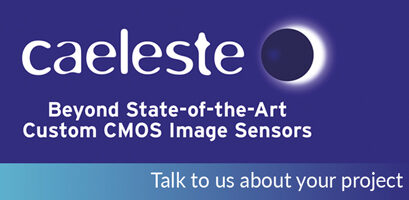Direct Electron announces a breakthrough in Microscopy Technology in cooperation with Caeleste’s image sensor technology. A world record of 0.5 Angstrom resolution in electron microscopy!
Half an Angstrom Resolution
Recently, @biochem_fan shared some exciting news on Twitter about a new development in microscopy technology. The first-ever 0.5 A resolution MicroED reconstruction was acquired using the new ultra-fast electron counting camera, Apollo. This news has caused a stir in the scientific community and has many scientists and researchers asking, what is MicroED and how does it differ from traditional electron microscopy techniques?
MicroED, or Microelectron Diffraction, is a technique that uses electron diffraction patterns to determine the three-dimensional structure of small biological molecules. This technique is unique because it can be used to study very small molecules, such as proteins and small drug molecules, that are too small for X-ray crystallography. In traditional electron microscopy techniques, the images are generated by the electrons interacting with the electrons of the sample, producing a diffraction pattern that can be used to determine the structure of the molecule.
The resolution of a microscopy technique is an important factor when considering its capabilities. The resolution is the minimum distance between two points that can be distinguished as separate entities by the microscope. A high resolution allows researchers to see finer details of the molecular structure and better understand the molecular interactions taking place.
The 0.5 A resolution MicroED reconstruction that @biochem_fan shared is a breakthrough in microscopy technology. This resolution is twice as high as the previous record, which was 1 A resolution. The 0.5 A resolution allows researchers to see finer details of the molecular structure and better understand the molecular interactions taking place.
The ultra-fast electron counting camera, Apollo, that was used in the MicroED reconstruction is a product of Direct Electron, a company specializing in electron microscopy technology. The camera is equipped with an image sensor designed by Caeleste, a Belgian company specializing in scientific imaging. The combination of Direct Electron’s camera technology and Caeleste’s image sensor technology has resulted in a powerful tool for researchers.
The #PDB and #EMDB hashtags mentioned by @biochem_fan in his tweet are relevant to the MicroED reconstruction. The PDB, or Protein Data Bank, is a repository of information about the three-dimensional structures of proteins, nucleic acids, and complex assemblies. The EMDB, or Electron Microscopy Data Bank, is a similar repository for electron microscopy data. These repositories provide a valuable resource for scientists and researchers, and the new 0.5 A resolution MicroED reconstruction will add valuable information to these databases.
In conclusion, the 0.5 A resolution MicroED reconstruction is a significant development in microscopy technology. The use of the ultra-fast electron counting camera, Apollo, has allowed researchers to achieve a resolution that was previously thought impossible. The combination of Direct Electron’s camera technology and Caeleste’s image sensor technology has created a powerful tool for researchers that will provide valuable information for the scientific community. The PDB and EMDB databases will benefit from the new data generated by the MicroED reconstruction, and researchers will be able to use this information to better understand the molecular structure and interactions of small biological molecules.

